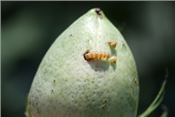Knowing The Limitations Of Bt Cotton For Managing Bollworms
DR. SCOTT STEWART
JACKSON, TENN.
Most everyone is aware that bollworms are not as susceptible as they once were to several Bt toxins present in cotton. Specifically, resistance monitoring across the Mid-South and spearheaded by Dr. David Kerns at Texas A&M University indicates that the bollworm has developed some level of resistance to the Cry1 and Cry2 toxins present in WideStrike, TwinLink, and Bollgard 2 cotton varieties. So the obvious question is what to do about it.
First, it is important to note that the Bt technologies listed above are still providing some level of protection. Let’s not forget they are providing near perfect control of tobacco budworm, and I think it would be unlikely that insecticide applications for bollworm would be needed prior to flowering. However, it is unclear whether levels of resistance have plateaued or are still increasing. Regardless, recent experience clearly indicates that foliar insecticide for bollworm are now more necessary on WideStrike, TwinLink, and Bollgard 2 varieties. The recommendation on these technologies is to be more aggressive in timing applications against eggs and hatching larvae, and the use of diamide insecticides (Prevathon, Besiege) will be the starting point when treating infestations of bollworm in these technologies. I won’t detail any specifics this early in the game, but you need to “get your mind right”.
Of course, option two is to use newer Bt technologies such as WideStrike 3, TwinLink Plus, and Bollgard 3. All include the Viptera trait (Vip 3A). If past experience in a predictor of future performance, it is much less likely that these technologies will require treatment for any caterpillar pest. I spent hours on the graphic below to make this point.
Growers are lining up cotton seed for the 2018 season, and a lot of variety selection is made based on herbicide tolerances. Be aware that this choice will impact how you manage bollworm infestations. It’s pretty much unanimous among the midsouthern university entomologist that is was the high use of both Cry1 and Cry2 toxins in corn that selected for Bt resistance in bollworm (a.k.a., corn earworm). It’s also a majority opinion that the use of the Vip3A toxin in some Bt corn hybrids is daring bollworms to become resistant to this trait. ∆
DR. SCOTT STEWART: IPM Extension Specialist, University of Tennessee

